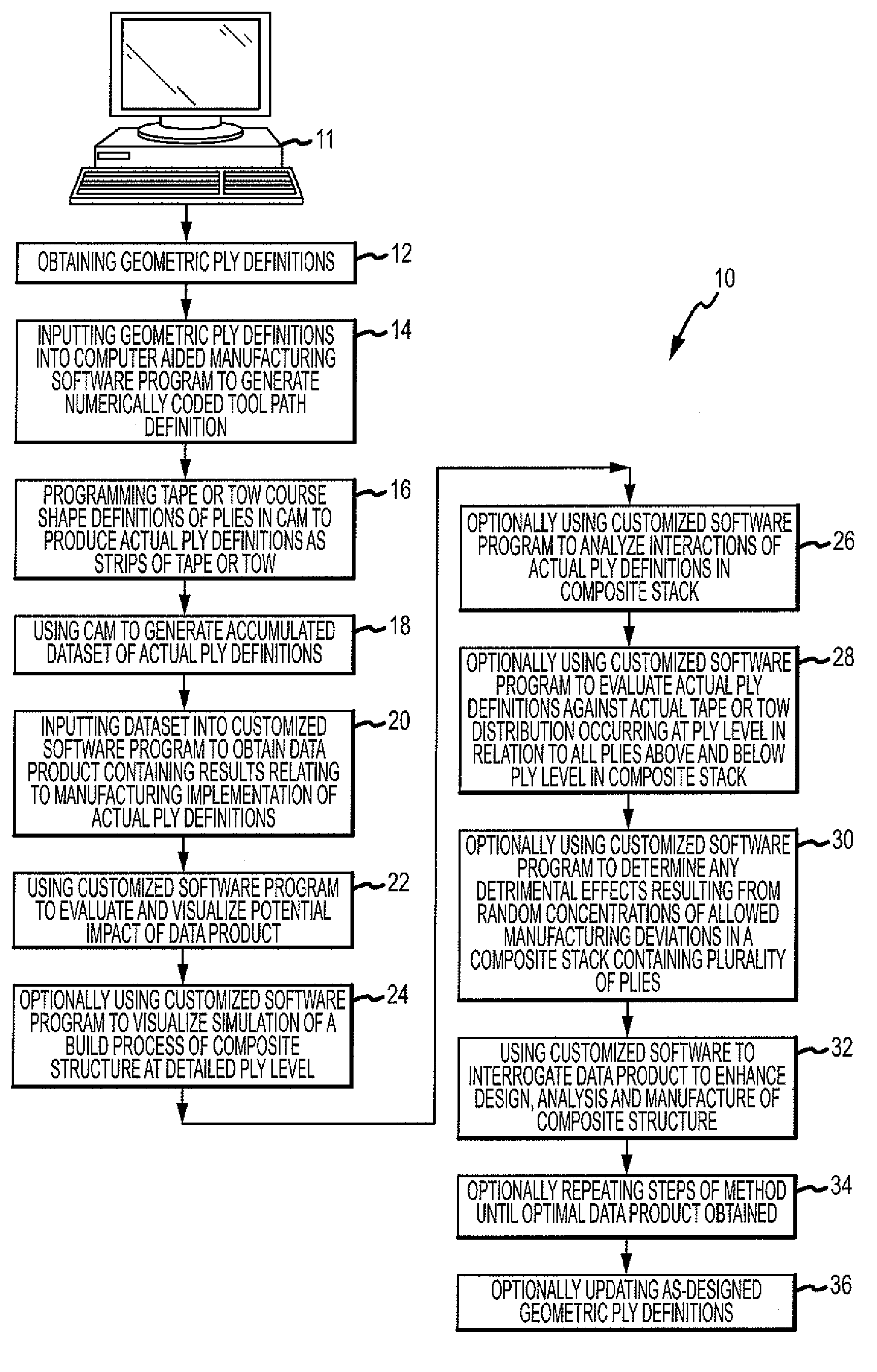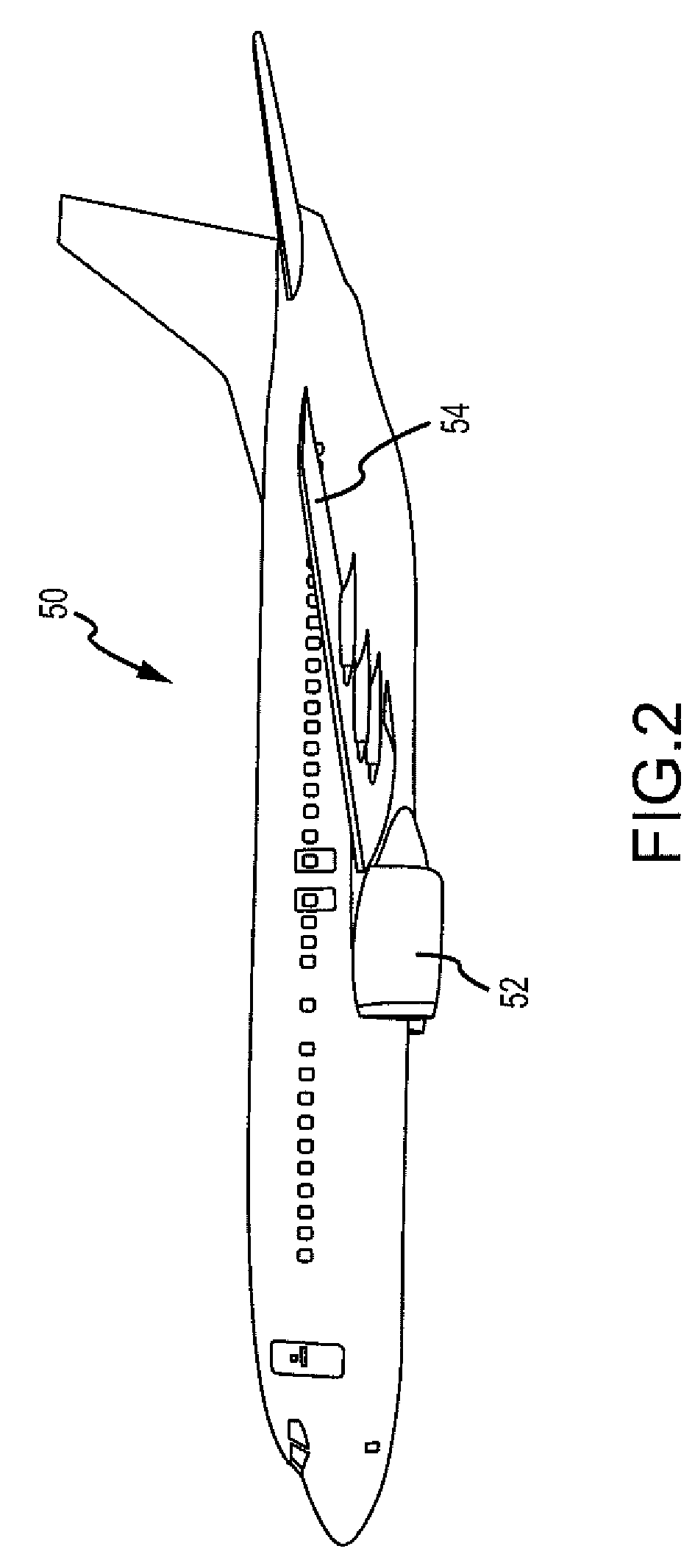Method of analyzing composite structures
a composite structure and analysis method technology, applied in the field of composite structure design and manufacture, can solve the problems of not providing adequate information, not providing information to evaluate actual tapes, not providing information to compare, etc., to improve the functional characteristics of composite structures, improve the design and manufacture of composite structures, and improve strength
- Summary
- Abstract
- Description
- Claims
- Application Information
AI Technical Summary
Benefits of technology
Problems solved by technology
Method used
Image
Examples
Embodiment Construction
[0023]Disclosed embodiments will now be described more fully hereinafter with reference to the accompanying drawings, in which some, but not all disclosed embodiments are shown. Indeed, several different embodiments may be provided and should not be construed as limited to the embodiments set forth herein. Rather, these embodiments are provided so that this disclosure will be thorough and complete and will fully convey the scope of the disclosure to those skilled in the art.
[0024]The method of the disclosed embodiments may be used in connection with the design and manufacture of composite structures and parts for use in various applications, including but not limited to, aircraft, spacecraft, watercraft, military craft, automobiles, trucks, buses, ships, bridges, rotor blades for aircraft, rotor blades for power generation such as wind, and other suitable structures and parts. Accordingly, one of ordinary skill in the art will recognize and appreciate that the method of the disclosu...
PUM
 Login to View More
Login to View More Abstract
Description
Claims
Application Information
 Login to View More
Login to View More - R&D
- Intellectual Property
- Life Sciences
- Materials
- Tech Scout
- Unparalleled Data Quality
- Higher Quality Content
- 60% Fewer Hallucinations
Browse by: Latest US Patents, China's latest patents, Technical Efficacy Thesaurus, Application Domain, Technology Topic, Popular Technical Reports.
© 2025 PatSnap. All rights reserved.Legal|Privacy policy|Modern Slavery Act Transparency Statement|Sitemap|About US| Contact US: help@patsnap.com



